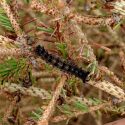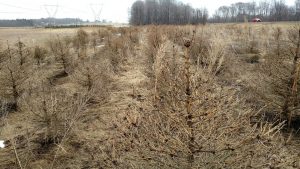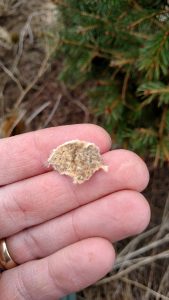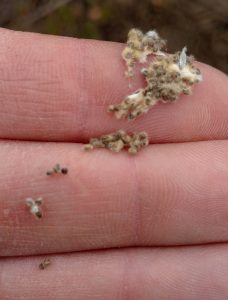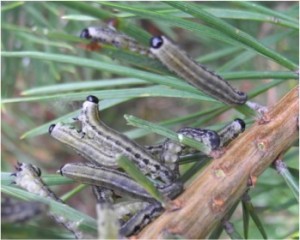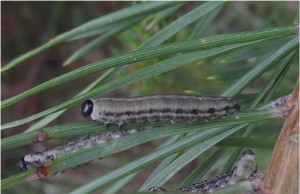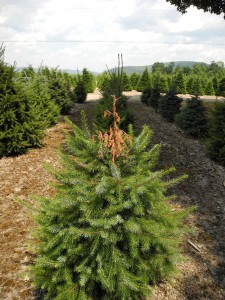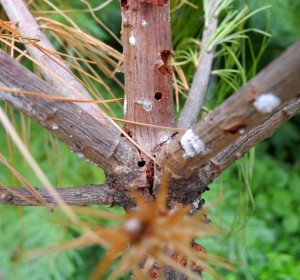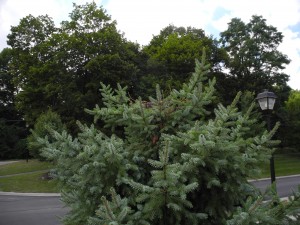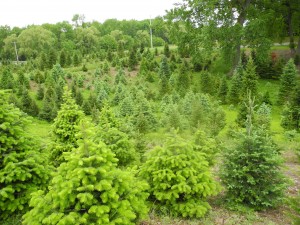
A diverse Christmas tree planting in Upstate New York.
A large planting of a single species is easier to manage and harvest but can be a windfall for pests. Monocultures allow insects and disease to expand rapidly as the pest can move unimpeded from one plant to another. After the devastation that occurred in community forests with streets lined exclusively with American Chestnuts (Chestnut Blight) and American Elms (Dutch Elm Disease), planting a diversified mixture of trees is now the standard practice among municipalities.
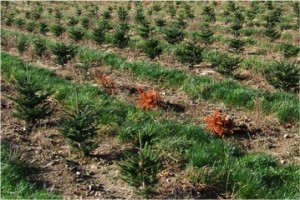
Dead Fraser fir with healthy Canaan Fir foreground and Turkish fir behind.
Many nursery and Christmas tree growers also know the advantages of growing a variety of species. They’ll choose tree species to fit their different environments on their farm. Then just like the smart investor who has diverse portfolio to minimize risks in the future, diverse plantings can prevent pests from moving in and wiping out all the trees. Even landscape designers when working with customers who envision a planting of a single species will often try to specify a mixture of similar species to increase resilience.
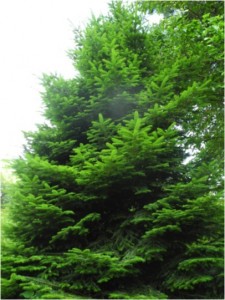
There’s increased interest in Turkish firs such as this example of Abies bornmuelleriana because of it’s root rot resistance.
Having a diverse planting works because most insects and diseases have preferences for the host species they feed upon. Many simply cannot live on a different genus, for example it is rare to find an insect or disease that lives on both fir and spruce trees. In addition certain sites on a farm or landscape may be more conducive to one species over another. For example if a species is mis-matched on a site with soil conditions it cannot tolerate, then the whole planting may succumb to a root rot.
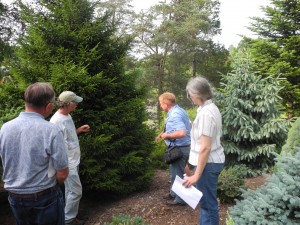
Growers taking notes on new tree species they may want to add to their plantings while at Cornell Plantations.
Cornell Plantations is one place where you can experience and compare a wide variety of deciduous trees and conifers. Although their plantings extend over several acres on campus, a concentration of conifers can be found at the Kienzle Overlook. http://www.cornellplantations.org/our-gardens/botanical/kienzle-overlook . At this website you can find a list of the 80 + conifers species that are in that planting.
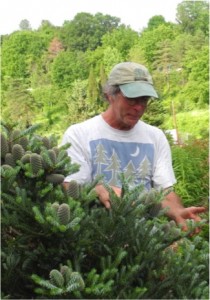
Phil Syphrit
Phil Syphrit pms26@cornell.edu is the curator of this collection and can help answer questions on some of these unusual conifers if you are interested in adding them to your plantings.

